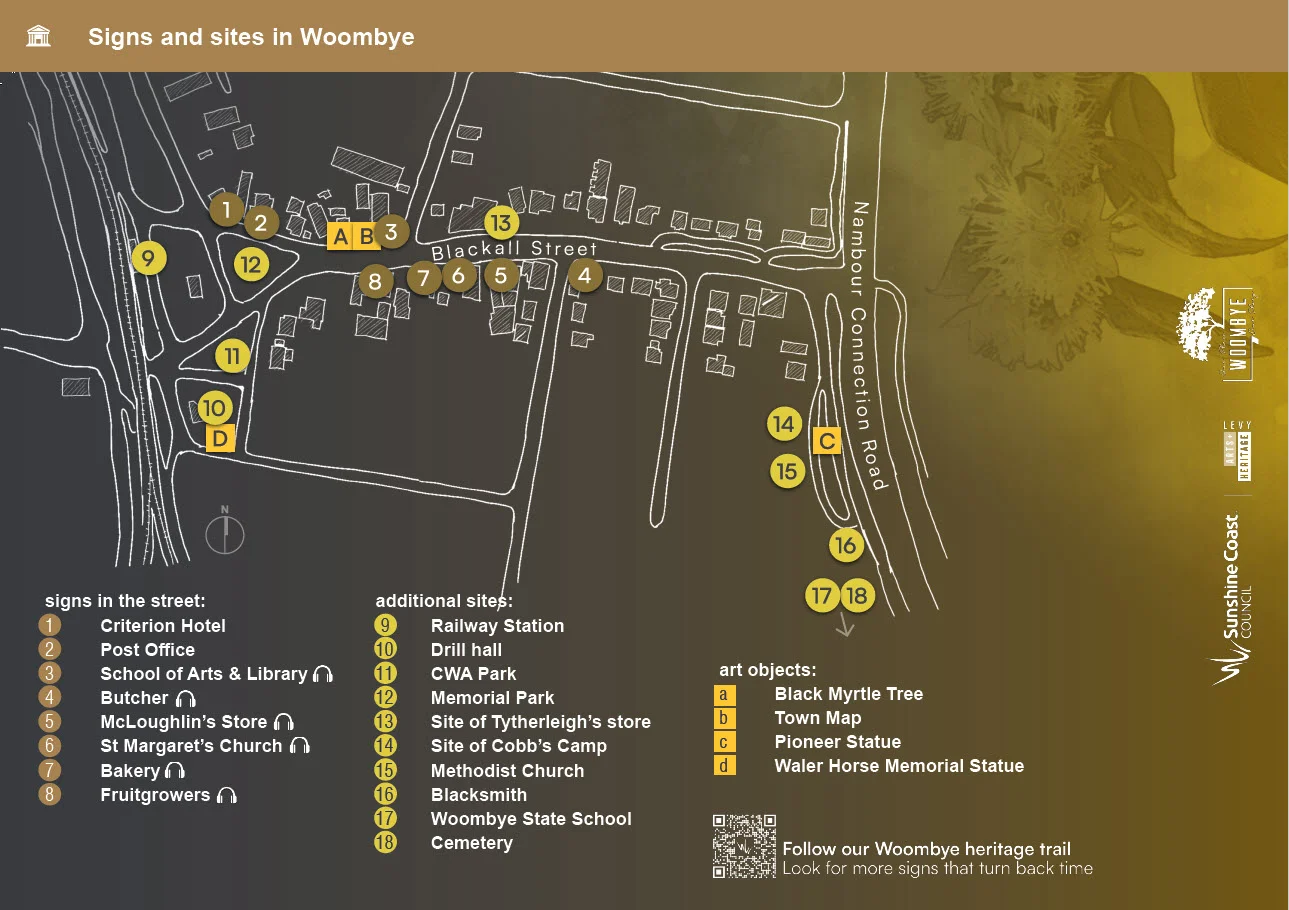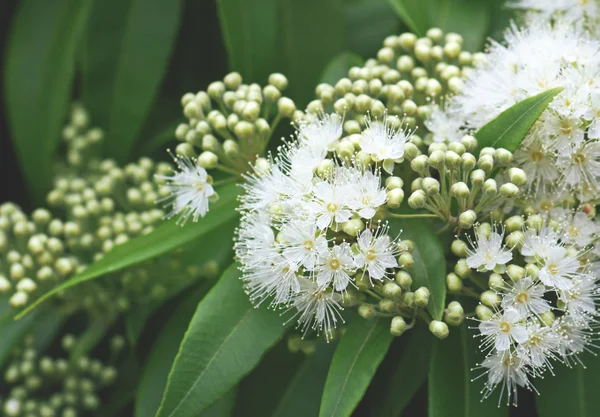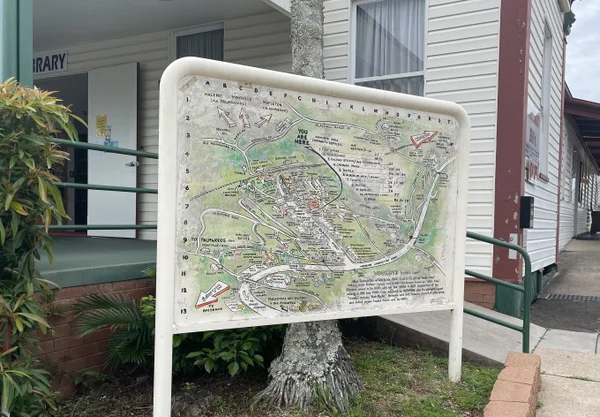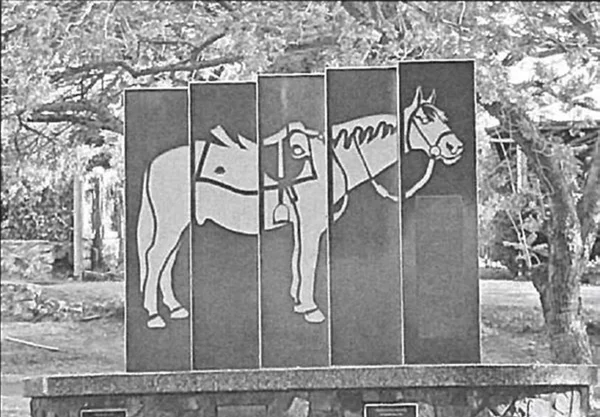Streetscape and art objects
Woombye’s rich past inspired the new streetscape project in Blackall Street as well as several art objects which can be discovered in town.

a Black Myrtle Tree

Woombi or Wumbi was the Kabi Kabi name for Woombye. It signified the dense groves of black myrtle trees that once grew along Paynter’s Creek, towards what is now Woombye’s Soccer Club and Pony Club fields.
Black myrtle (also called grey or cinnamon myrtle) was tough and pliable. It was favoured for making stone axe handles. The area was also associated with Wungi – the Carpet Snake, a Dreaming Ancestor who created creeks and rivers. For Aboriginal groups, Woombye was an important camp on the route to and from the Bunya Festival in the Blackall Ranges.
b Town map

Coming soon
c Pioneer Statue

Where the original Cobb’s Camp had been, a pioneer woman was erected in 1980 and sculpted by Mr Syd Polczyk. This was placed on a plinth of Pomona slate and a time capsule was buried underneath. A brass plaque with arrows pointing to historical places was put on top of the plinth. Mr Polczyk’s sculpture was designed and inspired by Henry Lawson’s poem “The Drover’s wife”. He had represented the classically stoic pioneering woman, whose strong features reflected the hardship and struggle that marked most pioneering lives. The sculpture is depicted rising up from the land with a child in arms symbolising the promise of their future.
Picture Sunshine Coast. Sunshine Coast Council.
d Waler Horse Memorial Statue

The Light Horse Memorial Troop used Drill Hall, which was once an original railway goods shed, as a meeting place. Near the Drill Hall is the memorial to the Waler horse, the breed famously used as mounts for the Light Horse troops. On 31 October 2015, the 97th anniversary of the Charge of Beersheba, the Waler horse was memorialised in the park.
Picture Sunshine Coast. Sunshine Coast Council.